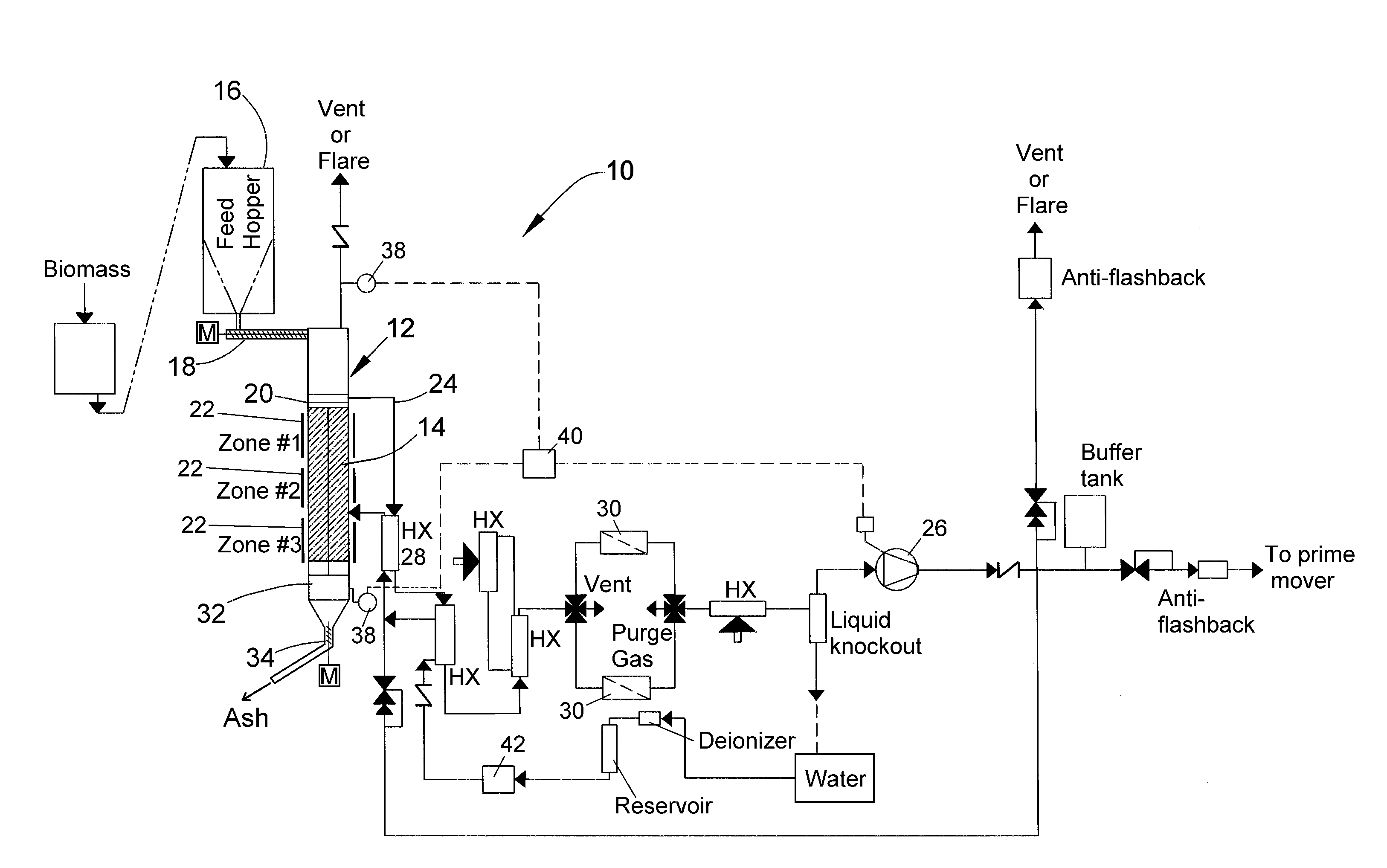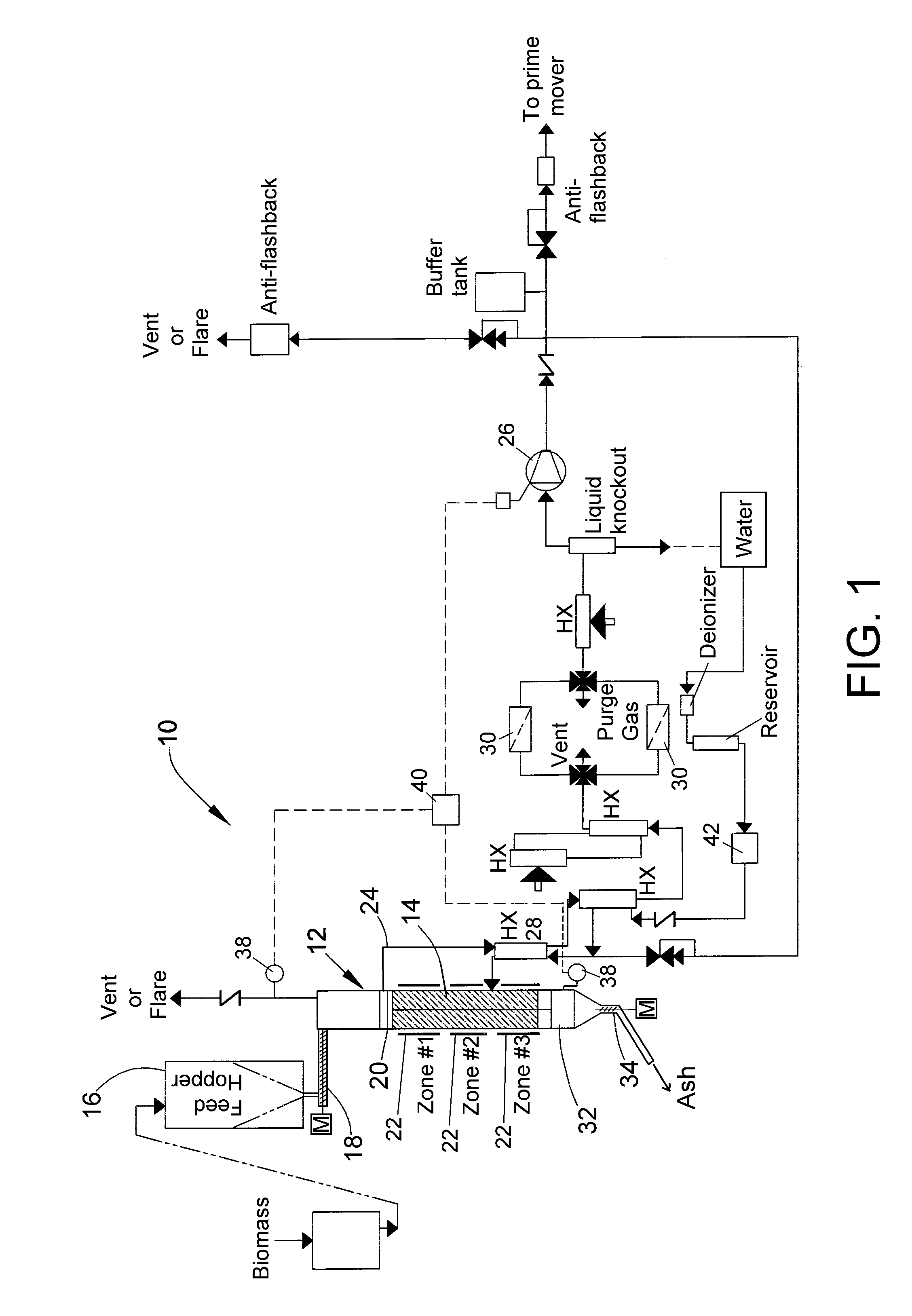Biomass gasification/pyrolysis system and process
a gasification/pyrolysis and biomass technology, applied in the field of conversion of organic lignocellulosic materials, can solve the problems of complex technology, poor quality products, and difficulty in maintaining desired heat transfer rates
- Summary
- Abstract
- Description
- Claims
- Application Information
AI Technical Summary
Benefits of technology
Problems solved by technology
Method used
Image
Examples
Embodiment Construction
[0014]FIG. 1 schematically represents a biomass gasifier system 10 in accordance with an embodiment of the invention. The system 10 is configured to have a neutral atmospheric pressure reactor 12, whose configuration is capable of minimizing energy input and equipment complexity of the system 10. FIG. 1 represents a biomass material as being delivered to the reactor 12 from a bulk hopper 16 via a feeder device 18, represented in FIG. 1 as an auger powered by a motor (M), though other methods of delivery are also within the scope of the invention, such as through the use of a ram or by gravity feed only. The biomass material enters a reactor tube 14 within the reactor 12 through an entrance or throat 20 at an upper end of the tube 14. The tube 14 serves as the containment vessel and defines an internal passage within which the gasification process occurs, producing syngas as a desired product and dry ash as a byproduct. The reactor 12 is configured such that syngas flows out, as does...
PUM
 Login to View More
Login to View More Abstract
Description
Claims
Application Information
 Login to View More
Login to View More - R&D
- Intellectual Property
- Life Sciences
- Materials
- Tech Scout
- Unparalleled Data Quality
- Higher Quality Content
- 60% Fewer Hallucinations
Browse by: Latest US Patents, China's latest patents, Technical Efficacy Thesaurus, Application Domain, Technology Topic, Popular Technical Reports.
© 2025 PatSnap. All rights reserved.Legal|Privacy policy|Modern Slavery Act Transparency Statement|Sitemap|About US| Contact US: help@patsnap.com


